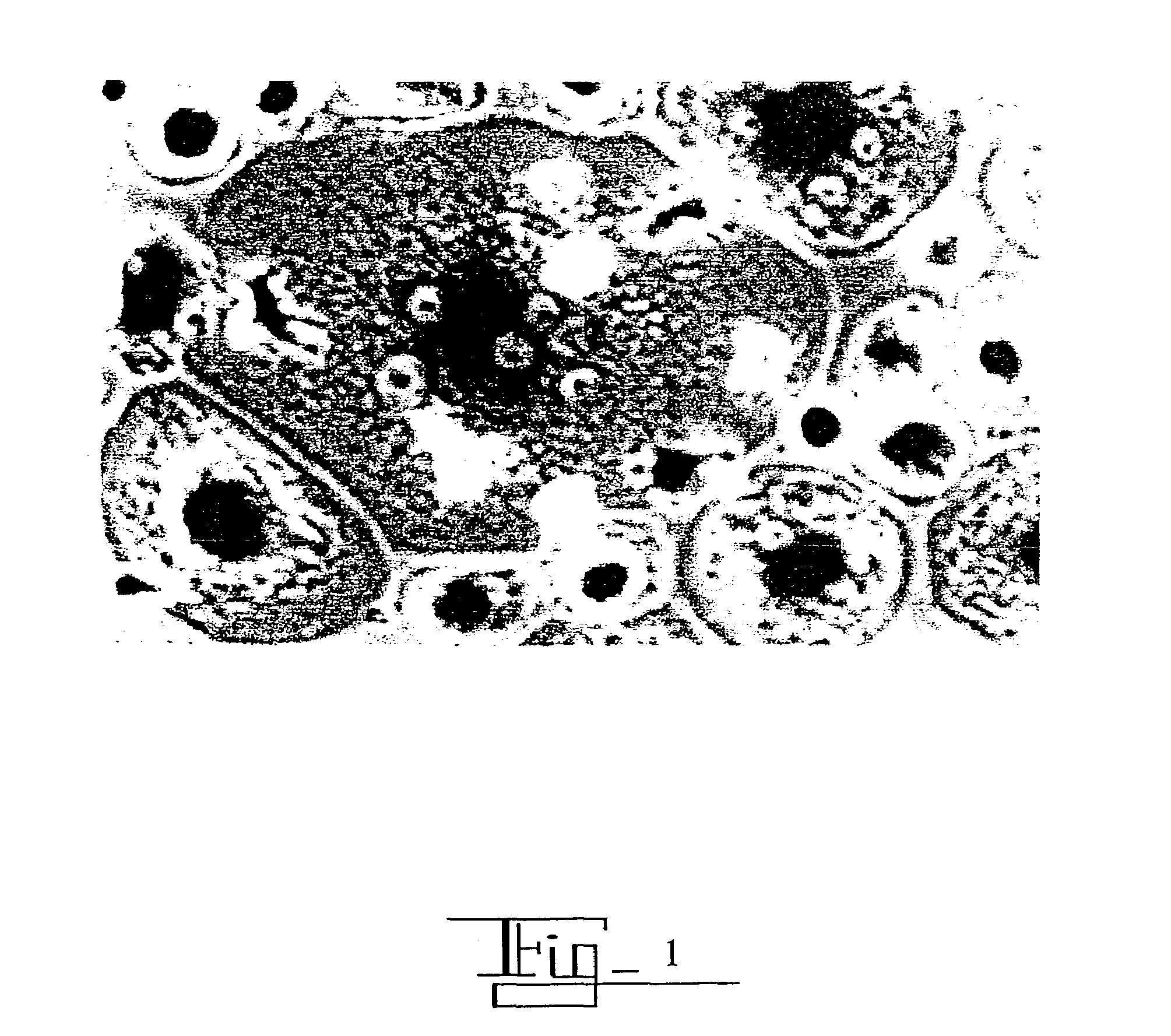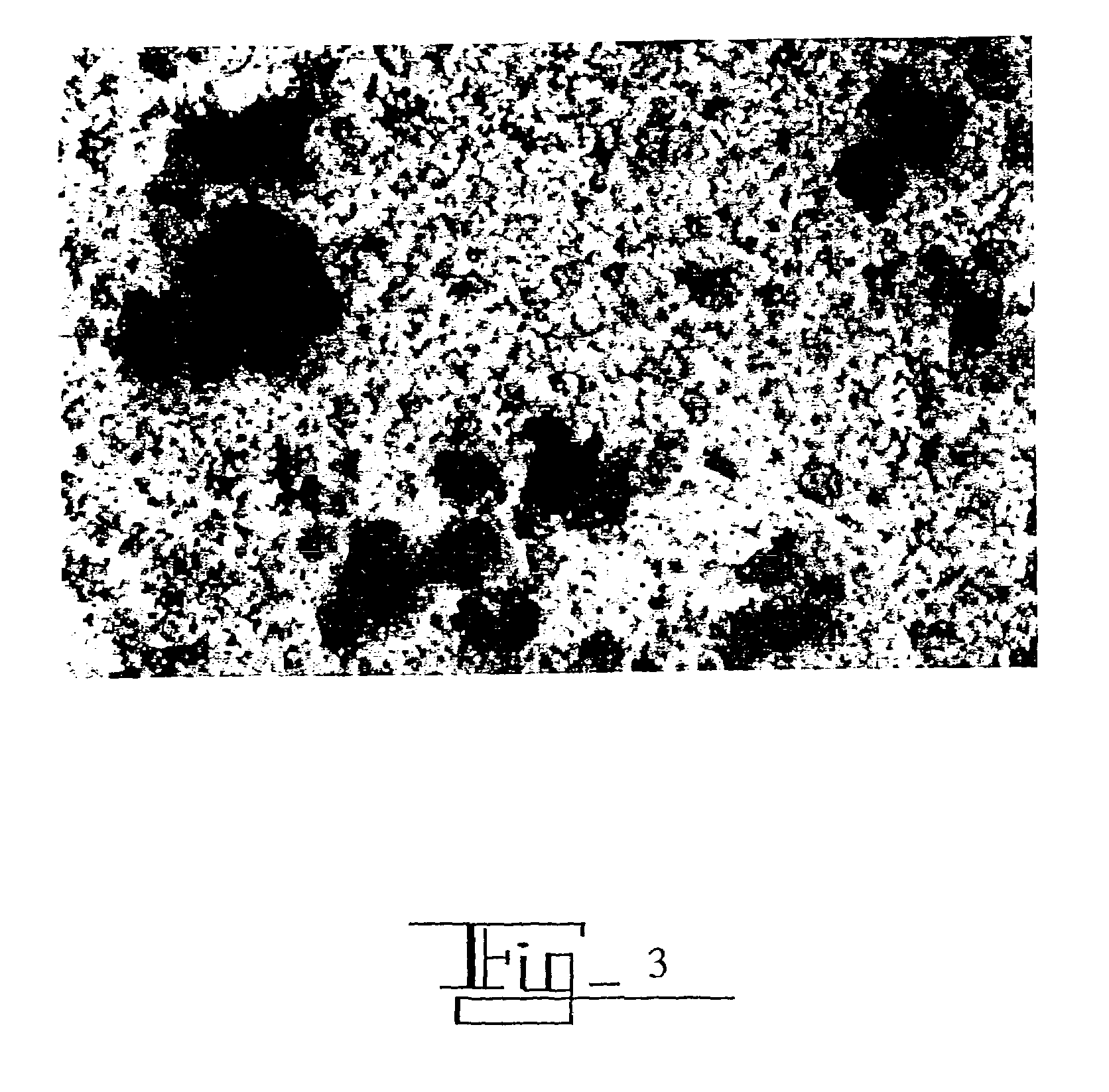Methods and compositions for enhancing immune response and for the production of in vitro Mabs
a technology of immune response and in vitro mabs, which is applied in the field of immunology, can solve the problems of different responses, no method or composition for producing the desired response, and difficulty in achieving the desired effect of specific target cells, so as to eliminate foreign immune responses, reliable and versatile
- Summary
- Abstract
- Description
- Claims
- Application Information
AI Technical Summary
Benefits of technology
Problems solved by technology
Method used
Image
Examples
example 1
[0133]The following is the general experimental protocol that was followed for binding a molecule, whether antigen or component-specific immunostimulating agent, to colloidal gold. The molecule was reconstituted in water. 200 μg of the molecule was incubated with 25 mL colloidal gold for 24 hours. The molecule / colloidal, gold complex solution was then centrifuged at 14,000 rpm for 20 minutes in a micro centrifuge at room temperature. The supernatant was then removed from the pellet.
example 2
[0134]50 μg of epidermal growth factor (EGF) was bound to 25 ml of 40nm colloidal gold particles at a pH of 11.0. The solution rocked on rocking platform for 24 hours. 50 μg (added as 50 μl) of targeting cytokine (i.e., IL-1β to target macrophages, IL-2 to target T cells, IL-6 to target B cells, and either TNF alpha or Flt-3 Ligand to target dendritic cells) was added to the EGF / Au solution and rocked for an additional 24 hours. To separate colloidal gold bound and unbound material the solution was then centrifuged at 14,000 rpm. The supernatant was removed and the pellet was reconstituted in 1 ml of water containing 1% human serum albumin.
example 3
[0135]EGF was bound to colloidal gold (CG) using the procedure in Example 2. Tumor Necrosis Factor-α (TNF-α) was then bound to the EGF / CG complex using the procedure of Example 1 to produce an EGFICG / TNF-o chimera.
PUM
 Login to View More
Login to View More Abstract
Description
Claims
Application Information
 Login to View More
Login to View More - R&D
- Intellectual Property
- Life Sciences
- Materials
- Tech Scout
- Unparalleled Data Quality
- Higher Quality Content
- 60% Fewer Hallucinations
Browse by: Latest US Patents, China's latest patents, Technical Efficacy Thesaurus, Application Domain, Technology Topic, Popular Technical Reports.
© 2025 PatSnap. All rights reserved.Legal|Privacy policy|Modern Slavery Act Transparency Statement|Sitemap|About US| Contact US: help@patsnap.com



